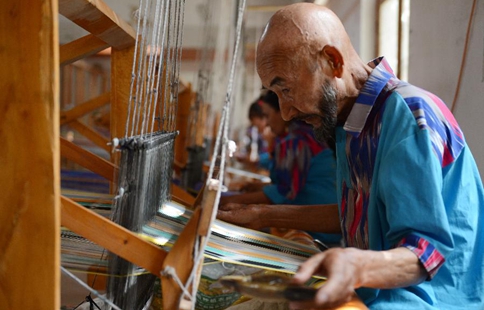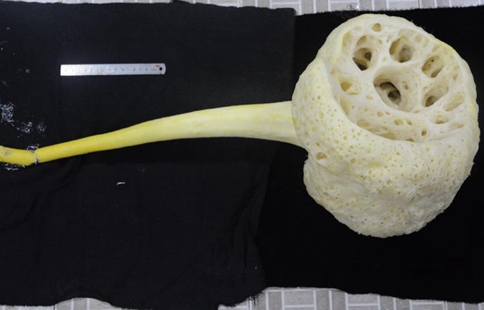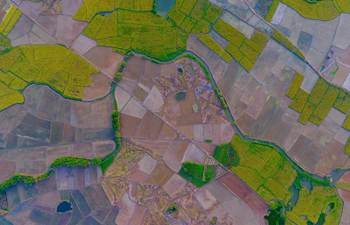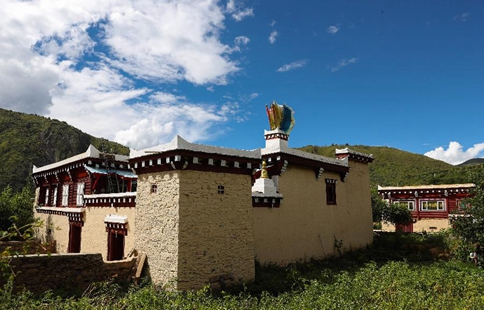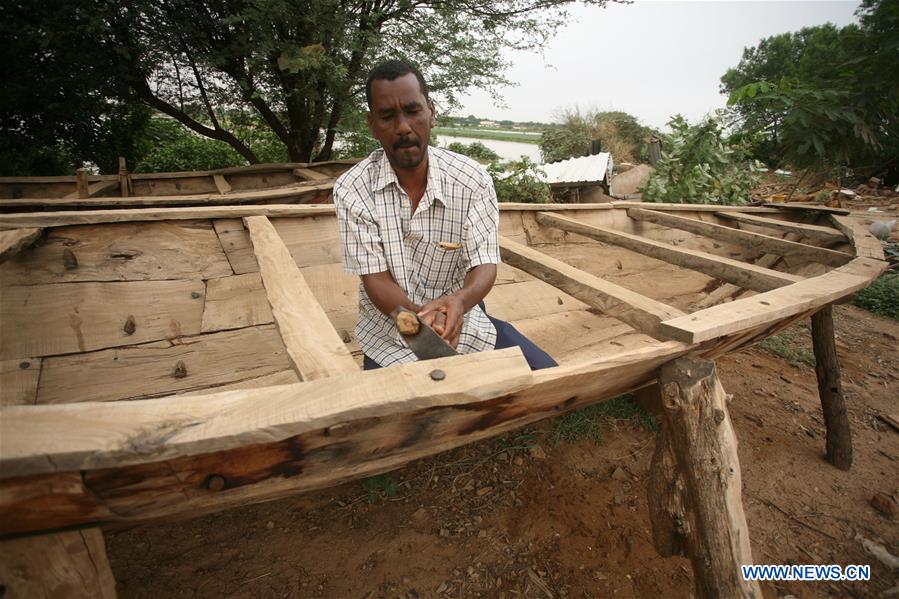
A man makes a wooden boat on the shore of the Nile at Abu Raouf area of Omdurman city, Sudan, on Aug. 14, 2017. Wooden boats in Sudan are still favored today as a means to cross the Nile River, particularly during seasonal flooding of the Nile, when levels of the river rise as a natural cycle since ancient times. The islanders and fishermen depend heavily on these traditional boats to transport their goods and personal belongings across the river, as the region is entering a season of Nile flooding. (Xinhua/Mohamed Khidir)
KHARTOUM, Aug. 14 (Xinhua) -- Wooden boats in Sudan are still favored today as a means to cross the Nile River, particularly during seasonal flooding of the Nile, when levels of the river rise as a natural cycle since ancient times.
The islanders and fishermen heavily depend on these traditional boats to transport their goods and personal belongings across the river, as the region is entering a season of Nile flooding.
Wooden boats building is still enduring in Sudan, namely on the shores of the Nile at Abu Raouf area of Omdurman city.
The wooden boats, locally known as "Marakib," has a long history in Sudan, where they used to be the only means to cross the Nile, and transport passengers and commodities, not to mention their use in fishing.
"I have been building wooden boats since 1955. These boats constitute a heritage for Sudan and their industry is still popular despite emergence of modern steel boats," said Al-Haj Hussein Nasr Mohamed, a Sudanese builder of wooden boats, who believes the wooden boats "will never end" in Sudan despite the spreading of modern transportation.
"Steel boats cannot compete with wooden boats because the latter is cheaper. Additionally, wooden boats can endure the factors of nature and do not rust because they are made of wood," he noted.
The wooden boats are flexible with the ability to withstand the wind and fluctuation of the weather, pointing out that the price of a wooden boat is less than 2,000 Sudanese pounds (around 100 U.S. dollars).
He added that "Islanders and fishermen are greatly connected to wooden boats because they have remained their means to transport their commodities during this time each year."
The wooden boats are built of al-Sunnut, or acacia wood, which is brought from areas of the White Nile in South Sudan, Al-Haj Mohamed said, adding that the building of a boat could take a month.
"It is not an easy task, where we begin with preparing the wood into forms of plates, then we make the general structure of the boat which is composed of the floor, the front, locally known as al-Muqadima, and the rear, locally known as al-Daraga (the shield) and finally the wooden plates are plastered to complete the body of the boat," he said.
He explained that boats are built as required in terms of length, width, height, size and purpose, noting that the builder must have an accumulative experience to complete the work with accuracy.
"Fishing boats are usually five to six meters in length, passenger boats 10 to 12 meters and commodity boats 15 to 20 meters," he said.
"We build wooden boats for all areas of Sudan. We have boats that sail to the far north of Sudan and the White Nile areas in central Sudan. We even have boats that are now present in South Sudan," he said.




